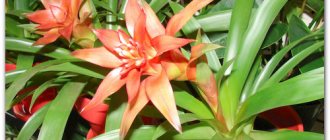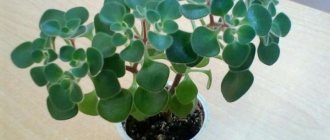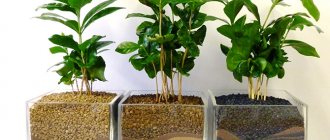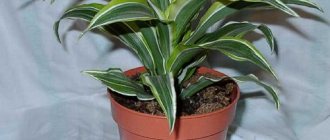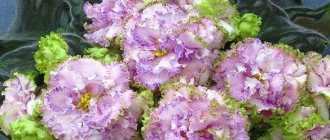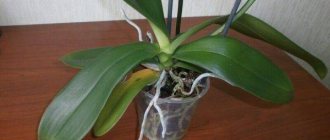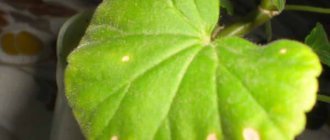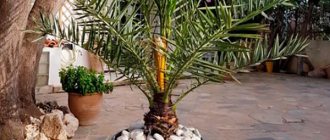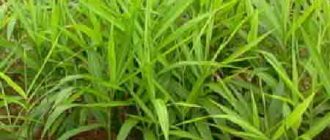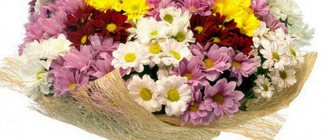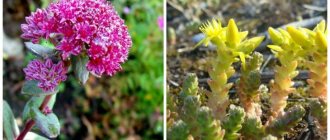Home — Botany — Houseplants — Turning the house into a tropical garden — basic recommendations for caring for Guzmania
The Guzmania indoor flower is an epiphyte from South and Central America. In nature, it grows on dying trees and receives moisture from the air. In indoor culture, this is an ordinary potted plant, quite unpretentious, but requiring compliance with several simple conditions.
The bright bracts are mistaken for flowers. Real Guzmania flowers are inconspicuous and short-lived.
The plant is evergreen tuft of long leaves with a bright, beautiful pre-flower and a short-lived flower. Guzmania is valued precisely for the leaves surrounding the flower - they can be pink, brownish and yellow, bright red and burgundy. In a room it rarely grows more than 40 cm, since it is problematic to provide “tropical” conditions in our homes.
Reed, aka Minor.
Popular types
Most often you can see a photo with reed Guzmania (aka Guzmania minor) - its distinctive features are bright bracts, shiny green leaves and the ability to bloom for a long time.
Tempo has light green leaves.
Common varieties also include:
- Mosaic Guzmania Guzmania musaica with 70-centimeter leaves forming a spreading rosette and a straight peduncle. Its leaves are decorated with brown and green stripes, and the bottom is colored red.
- Blood red Guzmania sanguinea - during the flowering period, all leaves (except for the outermost ones) turn bright red. The inflorescence of this species is not developed and is immersed in a rosette.
- Guzmania Donnell-smithii (donnell-smithii) has pale green scaly leaves and an erect flower stalk.
- Guzmania Tempo Guzmania Tempo, with light green leaves and bright bracts.
Blood red with luscious dark leaves and red spots of false flowers.
Basic requirements of Guzmania - light, temperature, humidity
Even such an unpretentious home flower as Guzmania requires compliance with certain conditions.
Many amateur aquarists breed angelfish at home; it is not difficult. How many people know what this name of popular aquarium fish means?
Look right now how beautiful and unusual the ordinary garden lilac is!
So, it is placed on western or eastern windows, in partial shade . Guzmania can only be moved to the south side in winter - this compensates for the natural lack of light.
Important! There is no need to place this delicate epiphyte on the windowsill. During the heating season it will die due to low humidity, and in summer direct sunlight will cause severe burns.
As for the temperature , even novice gardeners will not have problems here: in summer 20-25 degrees is enough, and in winter - no lower than 17. If the temperature drops to 16 degrees, the plant may get sick or not want to bloom.
The Morente look seems to imitate the colors of autumn.
to humidity , because it comes from the tropics. In summer, take it out onto the loggia, and in winter, a lighted bathroom may be a suitable place. You can place a humidifier or indoor fountain nearby. Regularly add water to the pan, but do not let it stagnate. Guzmania will also like spraying - and in the heat, “showers” can be carried out 2 times a day.
Lemon guzmania with bright yellow bracts.
Calathea diseases with photos and their treatment
As a rule, calathea diseases appear due to care errors, and treatment is to restore proper care.
The most common flower diseases:
- Root rot.
Causes: appears due to the fact that the plant is watered too often and abundantly.
Symptoms: the plant withers, dries out, turns yellow. It often becomes noticeable during transplantation, when examining the root system.
Treatment: if the lesion is small, then it is enough to stop watering for a while until the calathea absorbs the moisture that has already accumulated in the pot, and then restore it, but half as much as before, and gradually return to the normal watering regime.
- Drying of leaves.
| Probable Causes | What to do |
| Dry air. Calathea needs spraying or a tray with always damp expanded clay or pebbles, otherwise it dries out. | Remove dried leaves and restore the climate sufficiently humid for calathea. |
| Sunburn. Then the dried stain will be light brown in color and have vague outlines, indistinct. | Shade the plant, remove it away from the sun, and avoid direct sunlight. It will recover on its own, nothing else is needed. |
- Curling of leaves (during the day because it is normal at night, which is why Calathea is known as the flower that lifts its leaves at night).
| Probable Causes | What to do |
| Lack of watering or poor quality of water (cold, from the tap). | Water your home flower generously and never neglect watering again. |
| Draft or excessively cold (below eighteen degrees) climate. | Move to a warmer place without drafts. |
- Yellowing of leaves.
Possible reasons: too much or too little fertilizer.
What to do: analyze your behavior as an owner - have you overfed or underfed? And act accordingly: either feed or reduce fertilizer.
- Lack of flowering.
Probable reasons:
A) unsuitable soil. If you doubt your skills as a gardener, you can use weakly acidic, lime-free soil, ready for planting calathea in it, from the store.
B) any care errors. It’s difficult to say what exactly is wrong here. Flowers appear in any plant when it feels that conditions are favorable enough for reproduction (after all, by flowering, any plant, in fact, reproduces, prepares for reproduction), and anything, any deviation from the ideal can make it “think” differently.
Therefore, analyze your behavior, the conditions in which the calathea is kept (soil, pot, humidity level, frequency of fertilizing, how much there is around the world) and you will find an error.
Rules for watering and fertilizing
Caring for Guzmania at home means maintaining an optimal microclimate and proper watering. The main recommendations here are:
- a small amount of water is poured directly into the outlet, and the remaining water is removed after a few minutes;
- water the soil rarely - only if it is very dry;
- In winter, 1-2 waterings per week are sufficient, and in summer, daily watering is required;
- overwatering is more dangerous for Guzmania than overdrying;
- For spraying, use only clean water, and to remove dust, the leaves are occasionally wiped with a cotton swab.
The magnificent Donella-Smith.
When Guzmania blooms, it needs mineral supplements . It is worth buying a special complex for bromeliads that dissolves in water. Fertilizers in the form of a solution are also applied to the outlet. The frequency of feeding is once a month.
Interesting! If Guzmania is in favorable conditions, but does not bloom, then place apple slices in a bag on the ground (just make sure that they do not become moldy over time). The fruit will release ethylene and the plant will bloom very quickly.
Reproduction of calathea at home
Calathea can be propagated by cuttings (including leaves), dividing the bush or planting seeds. For the first three methods, you will need to perform a small surgical operation - to separate part of the plant. Therefore you will need:
- A sharp tool – scissors or a knife. They must be well sharpened, because you will need to separate part of the plant in one movement, without breaking or sawing, because such movements contribute to wounds that take longer to heal, accordingly, your pet is more vulnerable during this period.
- Alcohol or a saturated solution of potassium permanganate to disinfect instruments before surgery.
- Also, to disinfect the sections, you will need crushed activated carbon - you will sprinkle it on the sections.
- The cuts are made obliquely (at an angle of 45 degrees) - these are easier for the plant to heal and grow a new shoot in its place.
- Gloves to avoid getting your hands dirty with soil.
- Containers for small plants or one large container for seeds. For starters, just plastic cups filled with a special mixture for young plants (which will be discussed below) are suitable.
- Polyethylene or glass, because calathea is, in principle, a moisture-loving plant, and especially its seedlings.
It is best to propagate in the spring, so that the seedlings have favorable summer conditions for formation, and the mother plant calmly survives the stress of such manipulations. So, let's take a closer look at each method of propagating calathea at home.
Leaf
What needs to be done: cut a leaf from the calathea (healthy, large, whole, without damage, elastic) and plant it in a separate small pot with moist soil, cover with a greenhouse.
The greenhouse is removed when the leaf gives its first roots. Before this, you need to check whether condensation remains on the glass or film - it needs to be removed with a cloth and the sheet ventilated. Please note that this is the most unreliable method, unlike, for example, succulents, calatheas are difficult to propagate by leaf.
Cuttings
The same as with a leaf, but instead of one leaf, a whole cutting is taken - a stem with several leaves from twelve centimeters.
Dividing the root
This method is much more reliable, since calathea itself is prone to forming several rhizomes, which can be easily divided into individual plants. Most often, propagation by division is carried out during transplantation.
What needs to be done: use a knife or scissors to separate part of the rhizome so that it is like its own separate plant with everything necessary for life - root, stem, leaves.
I plant this plant in a separate pot (nine centimeters in diameter, no more), filled with a mixture of sand and peat. These pots should be placed in a place where there is no sun, but it will be warm (about 20⁰C), watered abundantly and covered with polyethylene or glass. The next watering is carried out when the substrate dries.
When the first independent leaves appear on the cutting, it can be transplanted into a larger pot and cared for like an adult plant. Please note that this will not happen immediately; calathea takes a long time to take root.
Seeds
The method is unreliable, since often even freshly collected calathea seeds do not germinate. Therefore, try to plant more so that at least a few sprout.
What you need to do: fill the container with two parts of leaf soil and one part of sand and sow the seeds in them.
The container is placed in a warm place where the temperature is always around 25⁰C. The soil should always remain slightly moist and not dry out. The greenhouse above the container must be cleared of condensation and ventilated for 10 minutes a day.
When the seedling has the first pair of leaves, it can be transplanted into a separate small pot. Please note that most often plants grown in this way do not retain the characteristics of their variety.
Replanting Guzmania - when needed
The roots of the plant develop extremely slowly, and therefore it does not need regular replanting. But it’s still worth replanting Guzmania if:
- You purchased a flower in a transport pot . You need to prepare a wide pot, up to 15 cm deep, and place drainage at the bottom. A suitable soil mixture is a combination of coarse sand, sphagnum, peat and turf soil. Handle the roots carefully when transplanting. Lightly cover the relocated plant with soil and then water it.
- You separate the “baby” from the old bush . The replanting process is the same, but you will have to carefully separate the plant's root systems. The mother plant is not viable after flowering and is discarded.
Mosaic look. The transverse stripes on the leaves resemble a pike tail.
How to prolong the pleasure - propagating Guzmania
Growing this tropical beauty is easy. But there comes a time when the flower dies and the plant loses its decorative effect. You can preserve the “tropical paradise” if you know how Guzmania reproduces .
Even during the flowering period, the plant forms a “baby” - usually one. The young flower grows very quickly and by the time the “parent” dies, it will already reach 15 centimeters in height. It is easy to know that a plant is ready to divide: the bract begins to dry out and the leaves turn pale.
Important! Before dividing, check that the children have roots. If they grow poorly, remove the peduncle in advance - this will stimulate their development.
After the mother plant withers, the children can be separated - this is done with a sharp knife. Baby Guzmania should be immediately planted in the prepared substrate, and the pot should be small, because the plant is small. Remember to use drainage to prevent your young plant from dying from overwatering. Reproduction of Guzmania is not difficult, so very soon you will be delighted with new bright flowers.
Anthurium - how to grow, how to care for, how to propagate. This indoor flower is called male happiness, and it is believed that it brings love and harmony between spouses to the house.
It turns out that aloe can be grown not only for health, but also for beauty. More details can be found here.
What to do with the huge aerial roots of indoor monstera? The answer to this question can be found at the link www.razmnojenie.ru/botanika/komnatnye-rasteniya/monstera.html.
Possible difficulties and diseases
Guzmania is easy to grow because it tolerates even unfavorable conditions. However, this plant also has its risks:
- The main pests that can affect Guzmania are: spider mites, scale insects. If parasites are found, wipe the leaves with soapy water, and if the infestation is severe, use insecticides.
- Regular waterlogging can lead to rotting of the root system.
- The plant may become infected with a fungus , as indicated by gray spots on the leaves. To get rid of it, you will need a fungicide.
The fungus began its destructive work from below.
Dieffenbachia species and varieties
Dieffenbachia maculata. The leaves are green, elliptical in shape, wide with a heart-shaped base on long green petioles with white spots and stripes. From it, forms are obtained that differ in the colors of the leaves and are superior in decorativeness.
Dieffenbachia seguine (D. seguine) - wide, ovate leaf blades with a rounded or heart-shaped base, a sharply tapering apex and a moderate number of white spots. It was this species that served as the initial form for many cultivated varieties.
Barraquiniana has snow-white petioles, dark green leaves with sparse irregular white spots and a white midrib.
Dieffenbachia Bowman's (D. bowmannii) has particularly beautiful spotted leaves that are 70 cm long.
dieffenbachia bowmannii
Jenmani leaves are bright green with white stripes on the side vein and sparse white spots between them.
The Irrorata variety has a petiole with white speckles and leaves with yellow spots.
In Camille, the central part of the leaf is white and turns green over time.
dieffenbachia camille
Dieffenbachia Leopoldii (D. leopoldii) - purple spots on the leaves.
dieffenbachia leopoldii
dieffenbachia leopoldii
Liturata's are dark green, dull, with a yellow border along the edge.
dieffenbachia liturata
Nobilis has dark green leaves with emerald green spots.
Mars with a white central vein on the leaf, in spots of light green, white and dark green.
dieffenbachia mars
Manifika - light green in color between the veins and white spots are scattered.
Memoria corsi has wavy, bluish leaves with a dark edge, with white and dark spots, while the bushy Compact has leaves with splashes of white spots that merge in the central part of the leaf blade.
dieffenbachia memoria corsii
Rudolf Rears has light yellow-green leaves, decorated with a dark midrib and edging of the same color; dark green and white spots of varying sizes are scattered throughout the leaf blade.
dieffenbachia rudolph roers
Tropic Snow (Tropical Snow) - along the central vein on a dark green background, a pattern of merged light yellowish-green spots and specks that diverge to the edges along the side veins.
dieffenbachia tropical snow
Super Tropic has a pattern with clearer outlines.
Companion plants
Medium varieties are combined with most other green plants, larger ones are grown separately.
